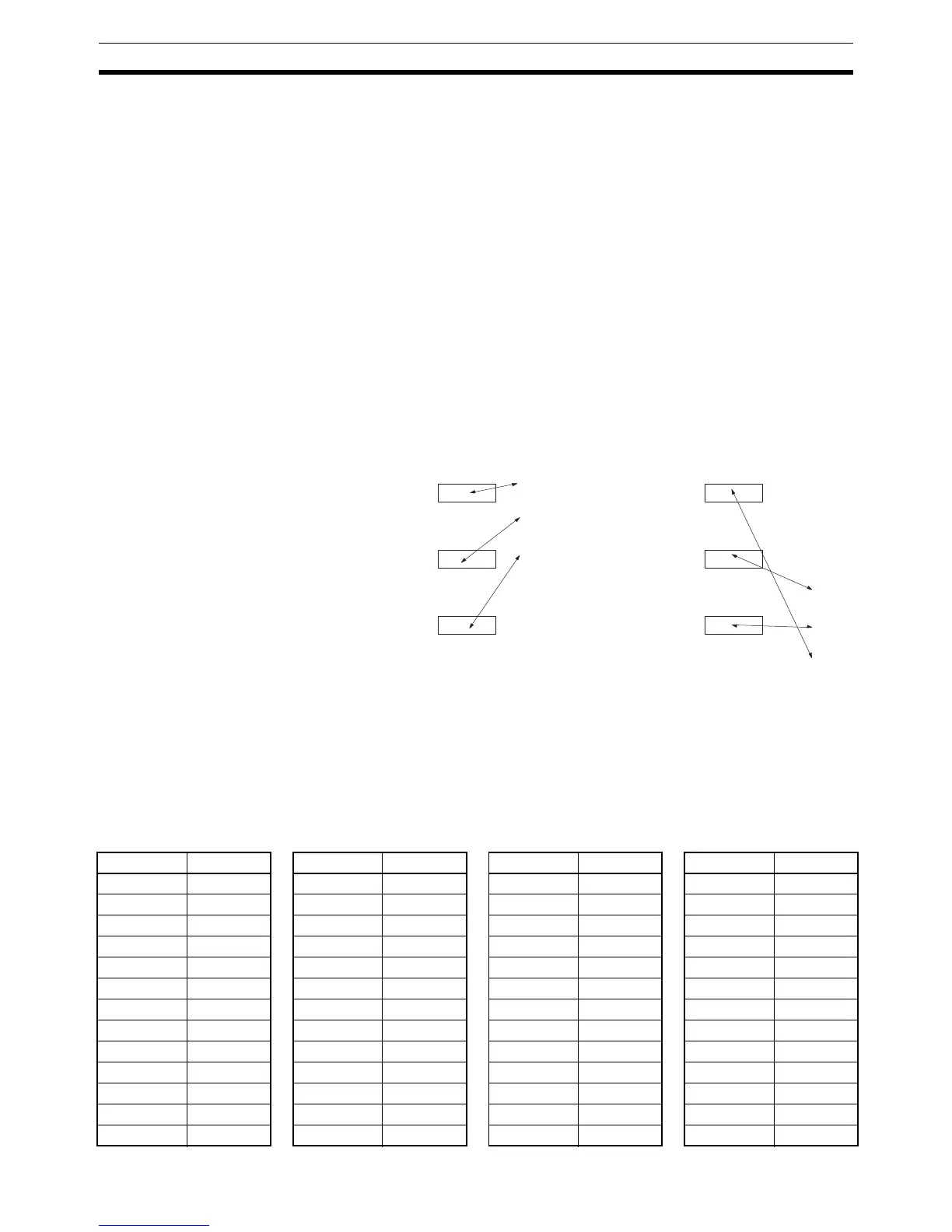214
Expansion Instructions Section 5-5
5-5 Expansion Instructions
A set of expansion instructions to aid in special programming needs. Function
codes can be assigned to up to 18 of the expansion instructions to enable
using them in programs. This allows the user to pick the instructions needed
by each program to more effectively use the function codes required to input
instructions.
The mnemonics of expansion instructions are followed by “(––)” as the func-
tion code to indicate that they must be assigned function codes by the user in
the instructions table before they can be used in programming (unless they
are used under their default settings).
Any of the instructions not assigned function codes will need to be assigned
function codes by the Programming Device and the CQM1H before they can
be used in programming. Changing the function codes assigned to expansion
instructions will change the meaning of instructions and operands, so be sure
to assign the function codes before programming and transfer the proper
expansion instruction settings to the CQM1H before program execution.
Example The following example shows how default function code settings can be
changed.
Function Codes for
Expansion Instructions
The following 18 function codes can be used for expansion instructions:
17, 18, 19, 47, 48, 60, 61, 62, 63, 64, 65, 66, 67, 68, 69, 87, 88, and 89
The 74 expansion instructions that can be used are listed below, along with
the default function codes that are assigned when the CQM1H is shipped.
Function code 61
Function code 64
Function code 65
Function code 61
Function code 64
Function code 65
INI
SPED
PULS
MAX
MIN
SUM
INI
SPED
PULS
MAX
MIN
SUM
At the time of shipping, the function codes are
assigned as shown above. (In this example,
the instructions all relate to pulse outputs.)
If pulse outputs are not being used, and if
maximum values, minimum values, and
sums are required, then the Set Instructions
operation can be used as shown above to re-
assign instructions in the instruction table.
Mnemonic Code Mnemonic Code Mnemonic Code Mnemonic Code
ASFT 17 ACC --- FIXL --- RAD ---
TKY 18 ACOS --- FLT --- SBBL ---
MCMP 19 ADBL --- FLTL --- SCL2 ---
RXD 47 APR --- FPD --- SCL3 ---
TXD 48 ASIN --- HEX --- SEC ---
CMPL 60 ATAN --- HKY --- SIN ---
INI 61 AVG --- HMS --- SQRT ---
PRV 62 CMND --- LINE --- SRCH ---
CTBL 63 COLM --- LOG --- STUP ---
SPED 64 COS --- MAX --- SUM ---
PULS 65 CPS --- MBS --- TAN ---
SCL 66 CPSL --- MBSL --- TTIM ---
BCNT 67 DBS --- MIN --- XFRB ---

